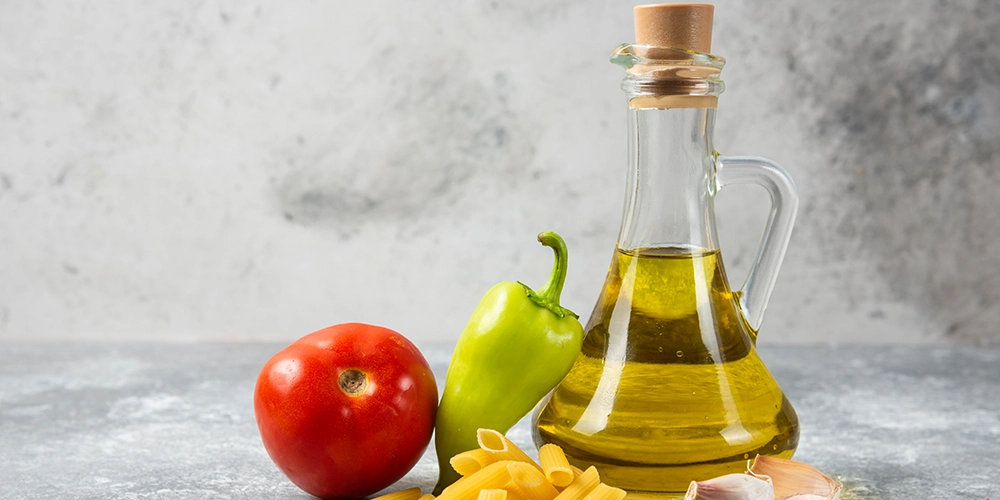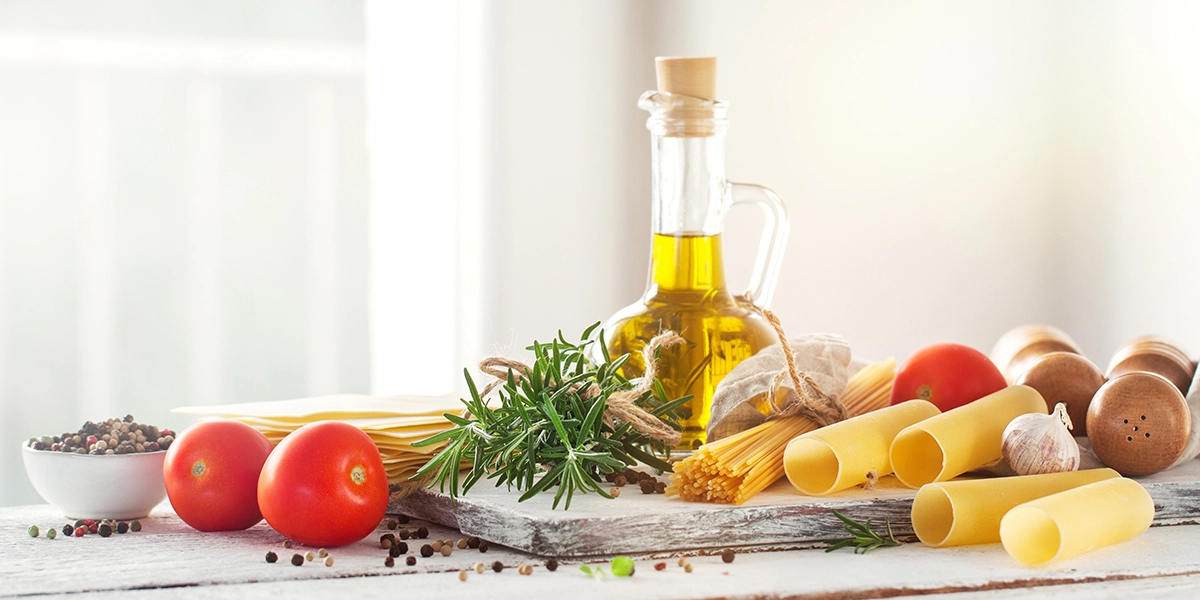Best Edible Cooking oil is a type of fat that is used for frying, baking, sauteing, and other cooking methods. It is derived from various plant and animal sources and is an essential ingredient in many cuisines around the world.
Types of Cooking Oil
Certainly! Here are some common types of cooking oils along with brief descriptions of each:
- Olive Oil: Extracted from olives, olive oil is a staple in Mediterranean cuisine. It comes in various grades, such as extra-virgin (made from the first pressing of olives, with a rich flavor), virgin (also from the first pressing, with a slightly milder taste), and refined (processed to remove impurities and has a lighter flavor). Olive oil is rich in monounsaturated fats and has a moderate to high smoke point.
- Vegetable Oil: A blend of different plant oils, often including soybean, corn, canola, and sunflower oil. Vegetable oil has a neutral flavor, a high smoke point, and is commonly used for frying, baking, and general cooking.
- Canola Oil: Made from the seeds of the canola plant, this oil has a mild flavor and a high smoke point. It contains low levels of saturated fat and is a good source of monounsaturated fats.
- Coconut Oil: Extracted from the meat of coconuts, coconut oil has a distinctive tropical flavor and aroma. It’s solid at room temperature and is often used in baking, frying, and in dishes where its flavor is desired.
- Peanut Oil: Extracted from peanuts, peanut oil has a high smoke point and is commonly used in Asian cuisine and for deep frying due to its neutral taste.
- Sesame Oil: Derived from sesame seeds, sesame oil comes in both light (milder flavor) and dark (stronger flavor) varieties. It is often used as a flavoring agent in Asian dishes.
- Sunflower Oil: Extracted from sunflower seeds, sunflower oil has a mild taste and a high smoke point. It is versatile and suitable for various cooking methods.
- Avocado Oil: Pressed from the flesh of avocados, avocado oil has a mild flavor and is rich in monounsaturated fats. It has a high smoke point and is often used for frying and sautéing.
- Grapeseed Oil: Made from grape seeds, grapeseed oil has a neutral taste and a high smoke point. It’s often used in cooking and as a base for salad dressings.
- Corn Oil: Extracted from corn kernels, corn oil has a mild flavor and is commonly used in frying, baking, and sautéing.
- Safflower Oil: Derived from safflower seeds, safflower oil has a light flavor and a high smoke point. It is often used for high-heat cooking methods.
- Rice Bran Oil: Extracted from the outer layer of rice bran, this oil has a mild flavor and a high smoke point. It’s commonly used in Asian cooking.
These are just a few examples of the many cooking oils available. Each oil has its own unique flavor profile, smoke point, and nutritional properties, making them suitable for different cooking techniques and cuisines. When choosing a cooking oil, consider the cooking method, flavor requirements, and health considerations.
Benefits of Cooking Oils
Cooking oils offer various benefits in terms of flavor, nutrition, and cooking versatility. Here are some of the benefits of using cooking oils:
- Flavor Enhancement: Different cooking oils have distinct flavors that can enhance the taste of your dishes. For example, using extra-virgin olive oil can add a rich and fruity flavor, while sesame oil can impart a nutty and aromatic taste to Asian dishes.
- Heat Transfer and Cooking Versatility: Cooking oils have specific smoke points, which determine the temperature at which they start to break down and produce smoke. Oils with higher smoke points are suitable for high-heat cooking methods like frying and sautéing. This allows you to achieve crispy textures and develop flavors in your foods.
- Non-Stick Cooking: Many cooking oils provide a non-stick surface when used for cooking. This can make cooking and cleanup easier, especially when dealing with sticky ingredients or delicate foods.
- Texture and Moisture: Cooking oils can help retain moisture in baked goods and sautéed dishes, contributing to a softer and more flavorful outcome.
- Nutrient Absorption: Certain fat-soluble vitamins (such as vitamins A, D, E, and K) require dietary fats to be absorbed by the body. Using cooking oils in your dishes can help facilitate the absorption of these essential nutrients.
- Energy Source: Cooking oils provide a concentrated source of energy due to their high calorie content. They can be a valuable part of a balanced diet, providing the energy needed for various bodily functions.
- Source of Healthy Fats: Many cooking oils contain healthy unsaturated fats, such as monounsaturated and polyunsaturated fats. These fats have been associated with various health benefits, including improved heart health and reduced risk of chronic diseases.
- Dietary Variety: Different cooking oils allow you to create a diverse range of flavors and textures in your cooking. This can help prevent food monotony and encourage a more varied and nutritious diet.
- Enhancing Nutrient Absorption: Some cooking oils, such as olive oil, have been shown to enhance the absorption of antioxidants from vegetables when used in cooking. This can amplify the nutritional benefits of your meals.
- Cultural and Culinary Diversity: Cooking oils play a significant role in shaping the flavors and characteristics of various cuisines around the world. They contribute to the uniqueness of different dishes and culinary traditions.
- Health Considerations: Certain cooking oils, like olive oil and avocado oil, are rich in compounds that have been associated with potential health benefits, such as reducing inflammation and supporting heart health.
It’s important to choose cooking oils wisely based on the cooking method, smoke point, nutritional profile, and flavor considerations. Incorporating a variety of cooking oils into your diet can provide a range of flavors and nutrients while contributing to overall culinary enjoyment and well-being.

How to Use Cooking Oils ?
Using cooking oils effectively involves understanding their properties, smoke points, and how they can enhance your dishes.
Here’s a guide on how to use cooking oils:
- Choose the Right Oil: Select the appropriate cooking oil based on your cooking method, desired flavor, and nutritional needs. Consider the smoke point of the oil—the temperature at which it starts to break down and produce smoke. Use oils with higher smoke points for high-heat cooking methods like frying, and oils with lower smoke points for sautéing or dressing.
- Sautéing and Stir-Frying: For sautéing and stir-frying, heat a small amount of oil in a pan over medium-high heat. Add your ingredients and cook quickly while stirring. Oils with high smoke points, such as canola, peanut, or vegetable oil, work well for these methods.
- Frying: When deep-frying, use oils with high smoke points, such as vegetable, canola, or peanut oil. Heat the oil to the desired temperature, usually around 350-375°F (175-190°C), and carefully add the food. Ensure the food is not overcrowded in the frying pan, as this can lower the oil’s temperature and affect the cooking process.
- Baking: Cooking oils can be used in baking to add moisture and flavor to your recipes. When a recipe calls for oil, follow the instructions and use the specified type of oil. For instance, you might use vegetable oil, canola oil, or melted coconut oil in baked goods.
- Roasting: Toss vegetables or proteins in a small amount of oil before roasting in the oven. Olive oil or other flavorful oils can add richness and help prevent sticking.
- Grilling and Barbecuing: Brushing or marinating meats and vegetables with oil before grilling can prevent sticking and add flavor. Olive oil or marinades with oil can work well for this purpose.
- Salad Dressings and Marinades: Combine oils with acid (such as vinegar or citrus juice) and seasonings to create flavorful dressings or marinades. Olive oil, avocado oil, and nut oils are commonly used for salad dressings.
- Flavor Enhancement: Drizzle high-quality extra-virgin olive oil over finished dishes like soups, salads, and grilled meats to enhance flavors.
- Storing Oils: Keep oils in a cool, dark place to prevent them from going rancid. Exposure to heat, light, and air can degrade the quality of oils over time.
- Health Considerations: Be mindful of the amount of oil you use to control calorie intake. While cooking oils can provide health benefits, they are calorie-dense. Opt for healthier fats, like unsaturated fats, when possible.
- Experiment and Explore: Don’t be afraid to experiment with different cooking oils in your recipes. Each oil has its own unique flavor profile, and trying different combinations can lead to exciting and delicious results.
Remember that while cooking oils offer many benefits, moderation is key. Using oils in appropriate amounts and in conjunction with a balanced diet can help you make the most of their culinary and nutritional advantages.
High Protein Foods Recommended For You
World’s most Nutritious and Healthy foods
Healthy Soups: Types, & Benefits
Read this Article Also:- Meadowfoam Seed Oil Benefits, Uses, Side Effects & How to Use
If you don’t like this article/post please share your feedback.





